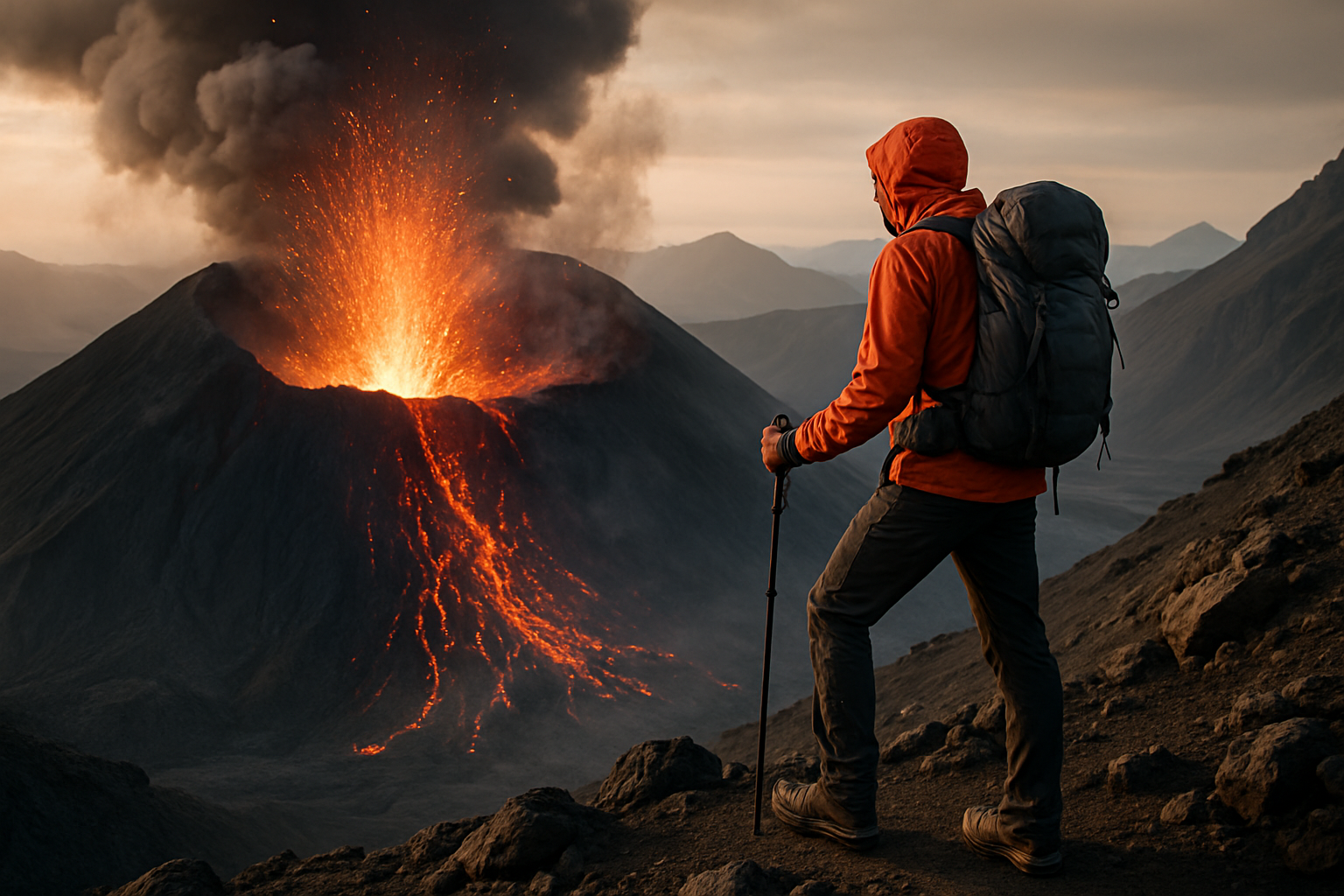Exploring Volcanic Tourism: A Journey to Earth's Fiery Wonders
Earth's volcanic landscapes offer a thrilling blend of natural beauty and geological intrigue. As travelers seek more immersive and unique experiences, volcanic tourism has emerged as a captivating niche. This article delves into the world of volcanic exploration, uncovering the allure of these geological marvels and providing insights into how adventurers can safely experience their raw power.

Understanding Volcanic Landscapes
Volcanoes come in various forms, each offering a distinct experience for visitors. Stratovolcanoes, like Mount Fuji in Japan, are characterized by their conical shape and dramatic silhouettes. Shield volcanoes, such as those found in Hawaii, feature gently sloping profiles and often produce spectacular lava flows. Calderas, formed by the collapse of a volcano following an eruption, create vast crater-like depressions that can evolve into stunning lakes or geothermal areas.
These diverse volcanic landscapes are home to an array of unique ecosystems and geological features. Visitors can explore lava tubes, witness steam vents and fumaroles, and marvel at colorful mineral deposits. The interplay between volcanic activity and the surrounding environment creates breathtaking scenery, from stark volcanic deserts to lush forests thriving on nutrient-rich volcanic soil.
Top Volcanic Destinations
While many volcanic sites exist worldwide, some destinations stand out for their accessibility, safety, and sheer spectacle. Iceland, often called the Land of Fire and Ice, offers a wealth of volcanic experiences. The country’s unique geology allows visitors to witness active volcanoes, explore vast lava fields, and even dive between tectonic plates in the Silfra fissure.
In Italy, Mount Etna on the island of Sicily provides a captivating blend of history and geological wonder. As Europe’s most active volcano, Etna offers visitors the chance to hike its slopes, explore its numerous craters, and witness occasional eruptions from a safe distance.
The Hawaiian Islands, formed entirely by volcanic activity, are a paradise for volcano enthusiasts. Hawaii Volcanoes National Park on the Big Island showcases the power of Kilauea, one of the world’s most active volcanoes. Visitors can explore hardened lava flows, steam vents, and, when conditions permit, witness the mesmerizing glow of molten lava.
Safety Considerations and Guided Experiences
While volcanic tourism offers unparalleled experiences, safety must remain a top priority. Many volcanic sites are actively monitored by scientists and local authorities to ensure visitor safety. It’s crucial for travelers to respect all guidelines, stay on designated paths, and heed warnings about potential hazards.
Guided tours led by experienced volcanologists or geologists provide an excellent way to explore volcanic landscapes safely while gaining in-depth knowledge about these geological wonders. These experts can offer insights into the volcano’s history, current activity levels, and the broader geological context of the region.
Some tour operators now offer specialized volcanic experiences, such as helicopter tours over active craters, nighttime hikes to witness lava flows, or even the opportunity to camp near a volcano. These unique adventures allow travelers to forge a deeper connection with these powerful natural phenomena while ensuring their safety through professional guidance.
The Impact of Volcanic Tourism on Local Communities
The growth of volcanic tourism has had a significant impact on many local communities. In some regions, it has become a vital source of income, creating jobs in tourism, hospitality, and related industries. This economic boost has helped support conservation efforts and fund scientific research into volcanic activity.
However, the influx of tourists to volcanic areas also presents challenges. Increased foot traffic can damage delicate ecosystems, while over-tourism may strain local resources. Responsible volcanic tourism requires a balance between providing access to these natural wonders and preserving them for future generations.
Many volcanic destinations are now implementing sustainable tourism practices. These include limiting visitor numbers, investing in eco-friendly infrastructure, and educating tourists about the importance of conservation. By engaging with local communities and supporting these initiatives, travelers can help ensure that volcanic tourism remains a positive force for both the environment and local economies.
Volcanic Voyager’s Toolkit
-
Always check current volcanic activity reports before visiting
-
Wear sturdy hiking boots with good traction for uneven terrain
-
Pack layers, as temperatures can vary greatly on volcanic landscapes
-
Bring plenty of water and sun protection
-
Consider hiring a local guide for in-depth knowledge and safety
-
Respect all safety barriers and warning signs
-
Capture memories responsibly – avoid disturbing the natural environment
-
Learn basic geology terms to enhance your understanding of volcanic features
Volcanic tourism offers a unique window into the powerful forces that have shaped our planet for millions of years. As this trend continues to grow, it presents both opportunities and challenges for destinations, local communities, and travelers alike. By approaching volcanic exploration with respect, curiosity, and a commitment to sustainability, we can ensure that these geological wonders remain accessible and awe-inspiring for generations to come. Whether you’re witnessing the glow of molten lava or hiking through otherworldly landscapes, volcanic tourism promises an unforgettable journey into the heart of Earth’s fiery spirit.





